SEG/AAPG Fall Distinguished Lecture Tour
I have had the honor to be named the Society of Exploration Geophysicists SEG/AAPG Distinguished Lecturer for the Fall of 2016.
Here is the SEG web page: SEG's Distinguished Lecture Program web site.
This position will take me all over the world on a lecture tour, thanks to the support of Statoil, Paradigm, and SEG/AAPG.
This will certainly be interesting, and hopefully a lot
of fun. On this page, I will provide a running commentary of my adventures, photographs, experiences. The latest posts will be
at the top of the page, so if you're new to the page read
up from the bottom. Here are PDFs of the three talks I am giving:
Geophysical Inversion: Which Model Do You Want? (requested 16 times)
Marine EM: The Past, the Present, and the Future. (requested 7 times)
Mapping Gas Hydrate with Electromagnetic Methods. (requested 6 times)
Well, it is all over. It has indeed been a whole lot of fun, and while the amount of travel is not inconsequential, I would recommend
anyone who is nominated agree to do this. I have met lots of old friends, and made some new ones. I've seen a whole lot more rain and snow
than I would have staying in California.
Many people asked me how the requests
for my three talks broke down, and so I have collated the numbers above. Sometime in the next month or so, I will be putting a voice-over on the talks
and SEG and I will post them, so stay tuned.
Finally, I'd very much like to thank Peggy Pryor
for making all the arrangements (which can be jolly complicated at times), and all my hosts:
Claudio D'Agosto,
Amy I'Anson,
Henri Brasse,
Helene Carton,
Jim Craven,
Fiona Duncan,
Ema Frery,
Aaron Girard,
Derrick Hasterok,
Shiori Kamei,
Koji Kashihara,
Adam Kroll,
Hitoshi Mikada,
Dietmar Muller,
Chris Nind,
Kathlene Oliver,
Dan Orange,
Louise Pellerin,
Joana Perez,
Michele Pipan,
Bui Cong Que,
Seda Rouxel,
Josh Sage,
Shin'ya Sakanaka,
Luise Sander,
Satish Singh,
Richard Smith,
Andrei Swidinsky,
Nguyen Nhu Trung,
George Tsoflias, and
Andreas Wuestefeld.
February 2:
Ottawa, and my last talk, at the Geological Survey of Canada, co-hosted by KEGS. Another good turnout - indeed, Canada has made my effort
to squeeze this last tour in between my teaching very much worthwhile.
February 1:
Today I swung through Sudbury to visit Laurentian University. More snow and a lot colder than Toronto, but by local standards very mild. A good
turnout with a number of geologists in the audience. I hope my topic ("Which Model Do You Want?") didn't put them off.
January 31:
My final fling as DL is a quick tour through eastern Canada. First stop Toronto. My last trip to University of Toronto was in the fall of 1983
just after I finished my PhD and moved to Scripps. Nigel Edwards had offered me a postdoc in Toronto and Ian Gough had offered me
one in Edmonton, so although I had chosen the third offer (in warmer climes) it seemed that a visit was in order. I remember well that Gordon West was in the audience (front row, I think), which
was a bit intimidating for a recently minted PhD, but afterwards Nigel told me that Gordon had not taken his
glassess off, which was considered to be a sign that I did alright.
Nigel and Gordon were both there this trip, and I survived the glasses test a second time.
Left: An icon of Toronto in the clouds. Right: The University of Waterloo contingent at the Toronto KEGS meeting.
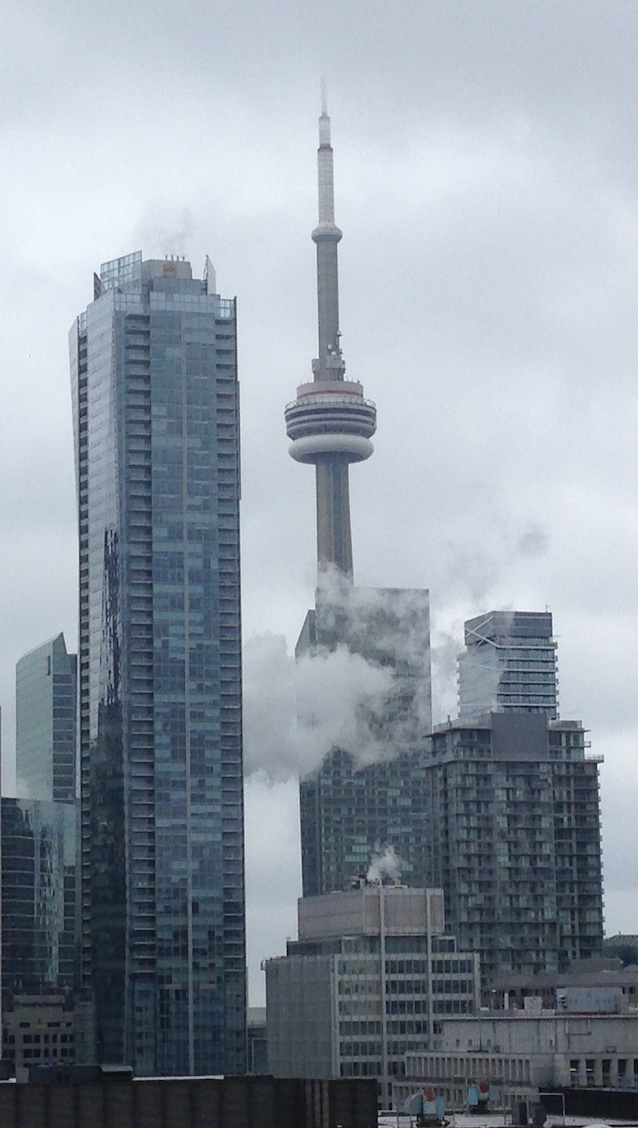 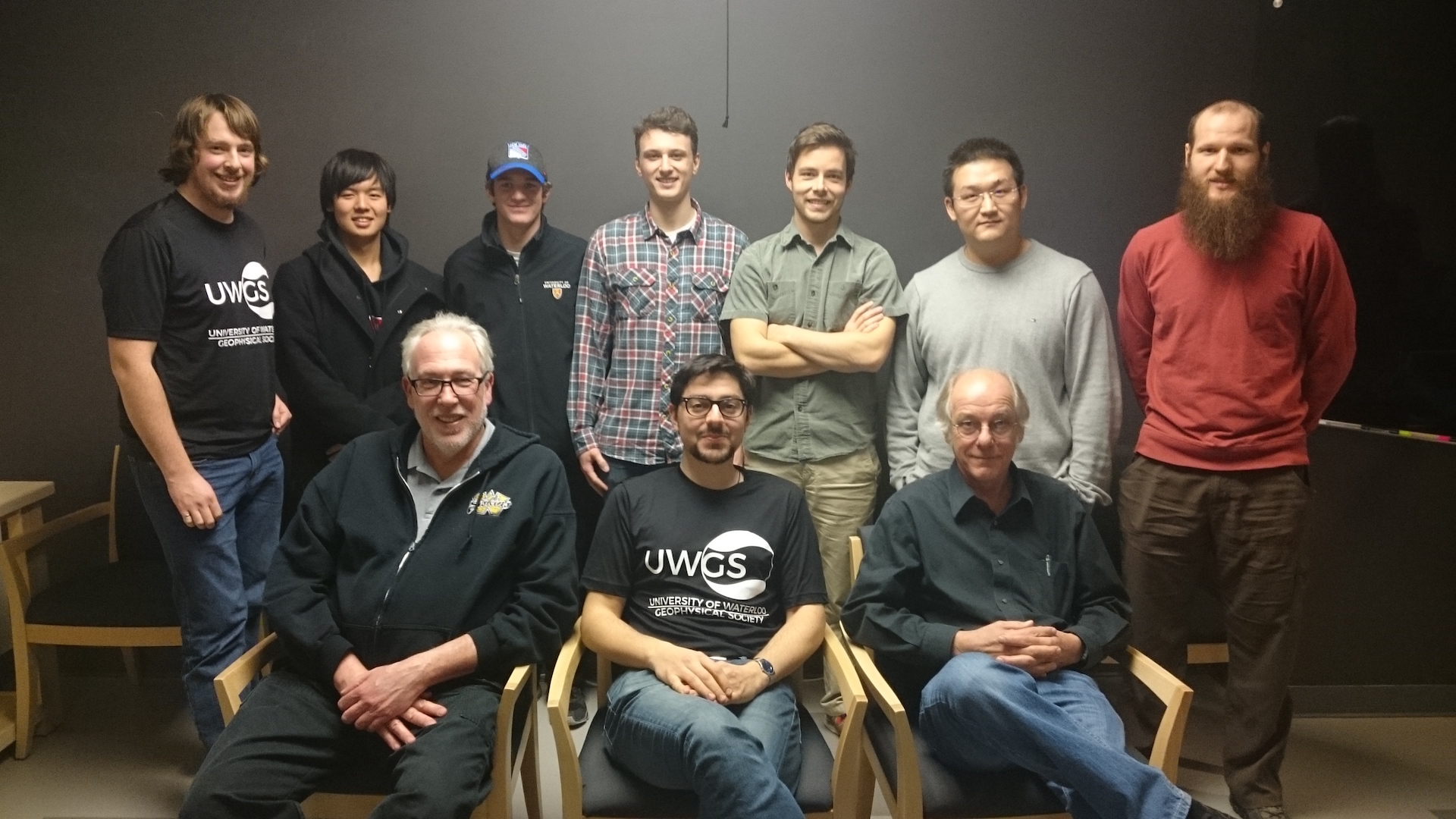
January 18:
Next up an overnight trip to Berkeley to present at BAGS - the Bay Area Geophysical Society. It rained the whole time I was there,
often very heavily, but I was comforted by the fact that California needs the water (and snow -- someone once described Los Angeles
as a city in the desert built on snow). After my talk we had a nice dinner (Cathy was able to join me) with my hosts David Alumbaugh and Louise Pellerin.
January 12:
I have sorta short-changed North America in my list of destinations, so SEG agreed to extend the tour into January. First stop was
an overnight trip to the Colorado School of Mines, which had been bumped in November in order to make the European trip work.
My talk was part of their Heiland lecture series, and they treated me very well. It was a real pleasure to share dinner with
Misac Nabighian, who was the editor of the two volume SEG publication "Electromagnetic Methods in Applied Geophysics" and part of
my first experience writing a book chapter (more than a quarter century ago!). The Denver area looked lovely under a light fall
of snow, but was jolly cold. Fortunately, after Oslo I had decided to buy a new down jacket.

December 12:
One of the nice aspects of the DL tour is that the Near Surface section of the American Geophysical Union (AGU) invites the speaker to present at the
fall AGU meeting. Having a one-hour speaking slot is a real honor, usually reserved for named section lectures, so I was very happy to accept this
invitation, and presented my "Marine EM" talk to a pretty decent sized audience. I normally go to the AGU anyway, and since I was being fellowed this
year wouldn't have missed it for the world.
November 15:
On Tuesday morning I flew to Trieste, my first visit to this lovely city. My host, Michele Pipan, showed me around the environs before my talk, and in particular
a church where there are some magnificently preserved early Christian mosaics on the floor.
Michele has done some work with ground penetrating radar to study pre-Christian
structures covered by these mosaics.
This was the end of my European tour. On Tuesday night I flew back from Trieste to Linate airport and had to transfer to Malpensa for an early morning flight
home. I had to make this transfer a long time ago, returning home from some of the early Sicily marine MT work, and remember vividly driving along the
autostrada at night, in fairly dense fog, in a totally underpowered rental car, with a totally terrified graduate student trying to navigate. In those days
the local hotels were miles from the airport (I remember several stays in the "Blue Hotel"), which added to the stress and suffering. This time I planned
ahead, and noting that trains and buses were just not going to cut it that late at night, arranged for an airport transfer "limo" service. A nice fellow
was waiting for me at Linate and 45 minutes later I was delivered stress-free to a shiny new airport hotel in the middle of Malpensa. Things do improve
over time.
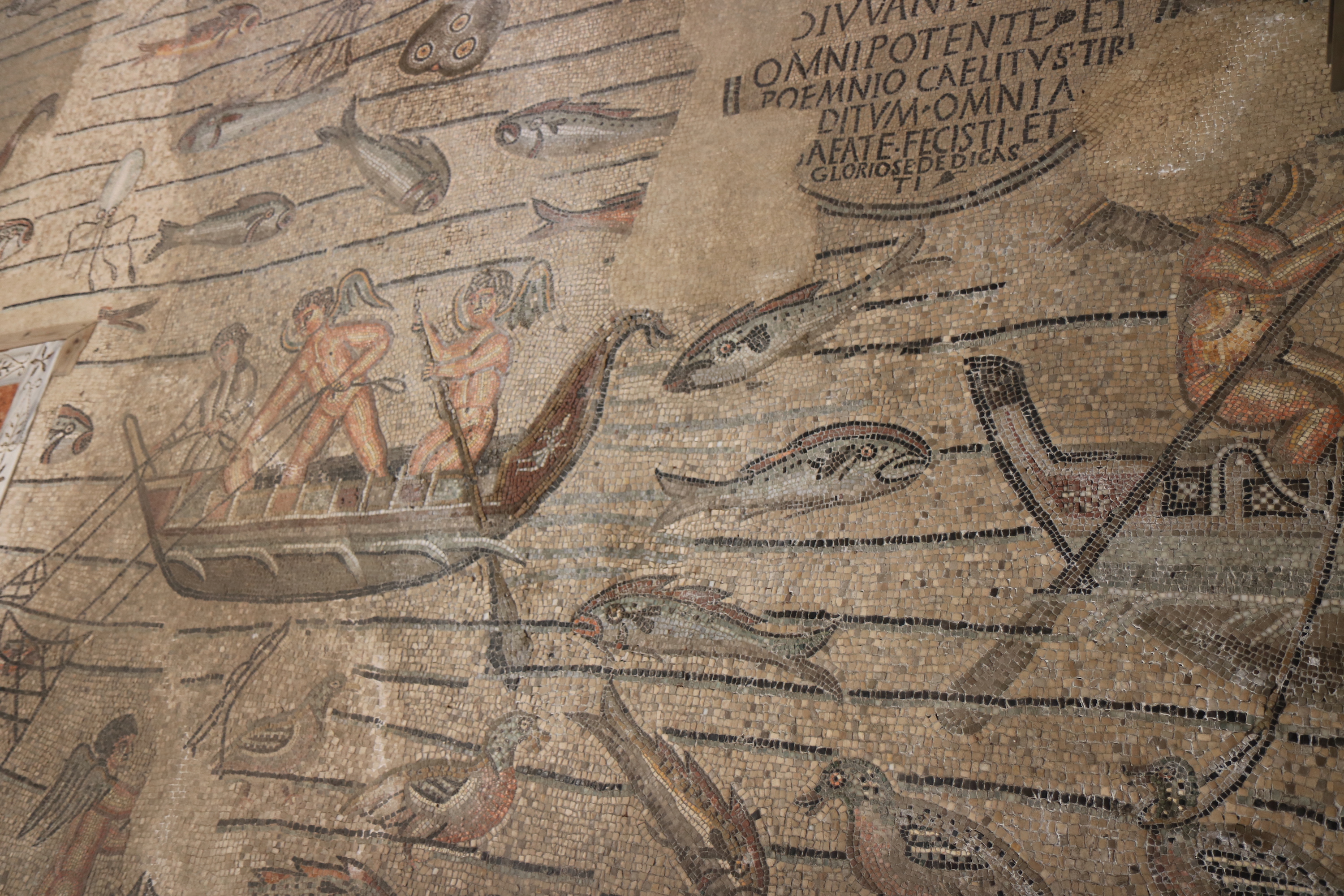
November 13-14:
Next stop Milan. I arrived on Sunday and a long-time associate in the MT business, Don Watts, kindly took me to an afternoon concert in Bergamo, one of those many
lovely Italian hill towns but with the added distinction of 800 years of music history. The Mendelssohn and Mozart (very conventional, in Don's words) was lovely.
On Monday I gave my talk at the ENI offices in Milan. ENI played a significant role in my part of the development of marine EM. They supported the very
early marine MT work (then as Agip), funding the research and also running commercial surveys with my equipment off Sicily and in the Gulf of Mexico.
Later they gave permission for Statoil/Scripps/Southampton to carry out the first marine CSEM survey over a hydrocarbon reservoir
on their Girassol prospect off Angola.
The talk was well attended, but also webcast live to 117 participants in 9 other countries across the world.
Why I love Italy:
 
November 12:
I travelled from Oslo to Berlin on the 10th and my host from the Free University, Henri Brasse, was kind enough to pick me up from the airport. We had lunch
in the KaDeWe (Kaufhaus des Westens - Department Store of the West), a sort of Harrods in Berlin, which is just across the road from my hotel. During the cold war
KaDeWe represented a kind of
propagandic emblem of Western prosperity for anyone who got to visit from the East. After a respectful pause lunch was followed by
dinner with colleagues from GFZ, Potsdam, which was nice.
Henri picked me up from my hotel in the morning to take me to the University and we agreed that we had drunk one too many glasses of wine in the hotel bar
after dinner, but that our Potsdam colleagues were to blame. Henri and I plotted some collaborative work and in the afternoon
I gave my talk and spent some time with the students, who took me to dinner via the Brandenburg Gate, where, somehow, one inevitably ends up whenever one is in
Berlin. We took the obligatory photo. (Tonight Henri and I ended up at the gate again, which is right by the U.S. embassy, and walked by an anti-Trump demonstration which my travel
insurance plan had warned me to avoid.)

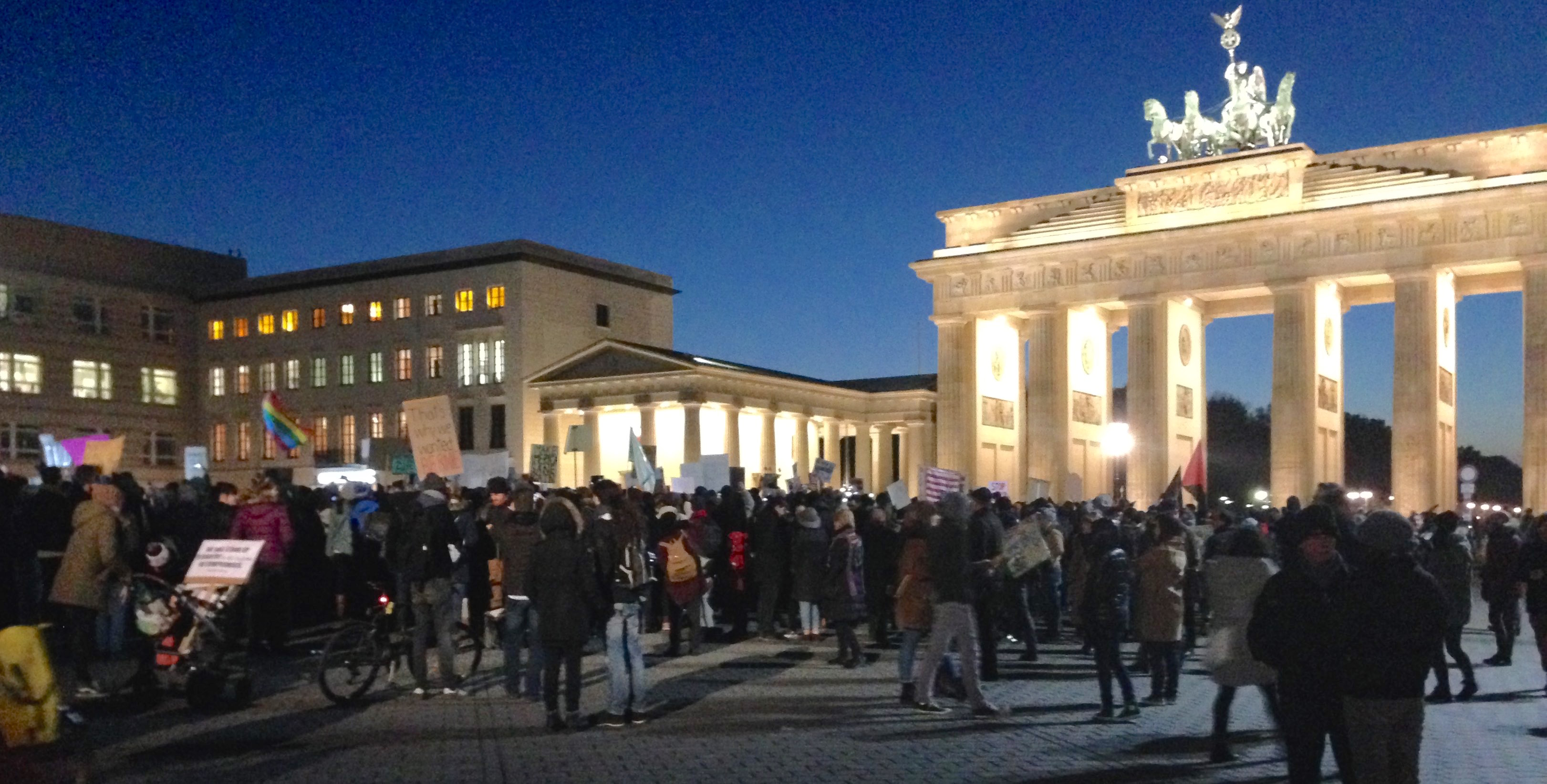
November 9:
Next on the list was Oslo. Several Norwegian companies and institutions had a big hand in the commercialization of marine CSEM methods,
and so there is considerable interest in my work here. We had another good turnout with a generally well-informed audience.
There was a very nice reception after which included dinner, and I would like to extend my thanks to the Norwegian Geotechnical Institute for hosting this.
It had snowed just before I arrived and the locals were all complaining that winter had arrived early this year. We had Santa Ana winds in San Diego,
and I worked out that (in Fahrenheit) Oslo was 70 degrees colder than my home town.

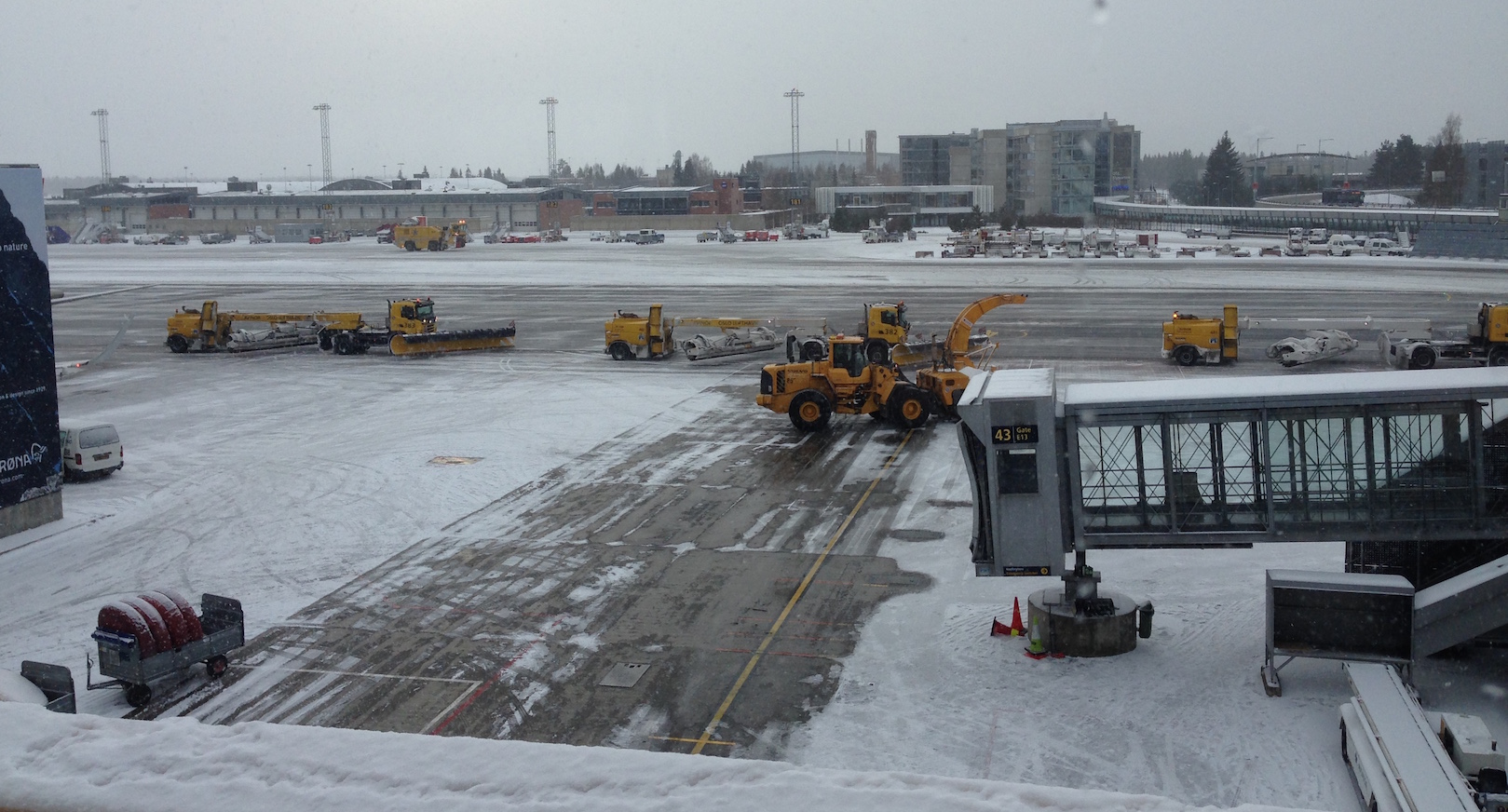
November 8:
This is the start of my last international leg, through Europe. First stop is the Institut de Physique du Globe de Paris (or IPGP). My home institute
is the Institute of Geophysics and Planetary Physics (IGPP) at Scripps, and the two groups have a history of communication and collaboration that
transcends the similarity in names, so this is familiar territory for me. For example, we currently have a collaborative project to study the base of the lithosphere
in the Atlantic. (See my iLAB web page.)
My talk was well attended (standing room only), which was nice given that IPGP seems to have seminars every day (and two on the day I spoke). The Paris
weather was not ideal, however, with quite a bit of rain, so no photos of the city, I'm sorry to say. But as you can guess the food and wine was good.
My hosts for the Paris visit, Helene Carton and Satish Singh (examining the menu):
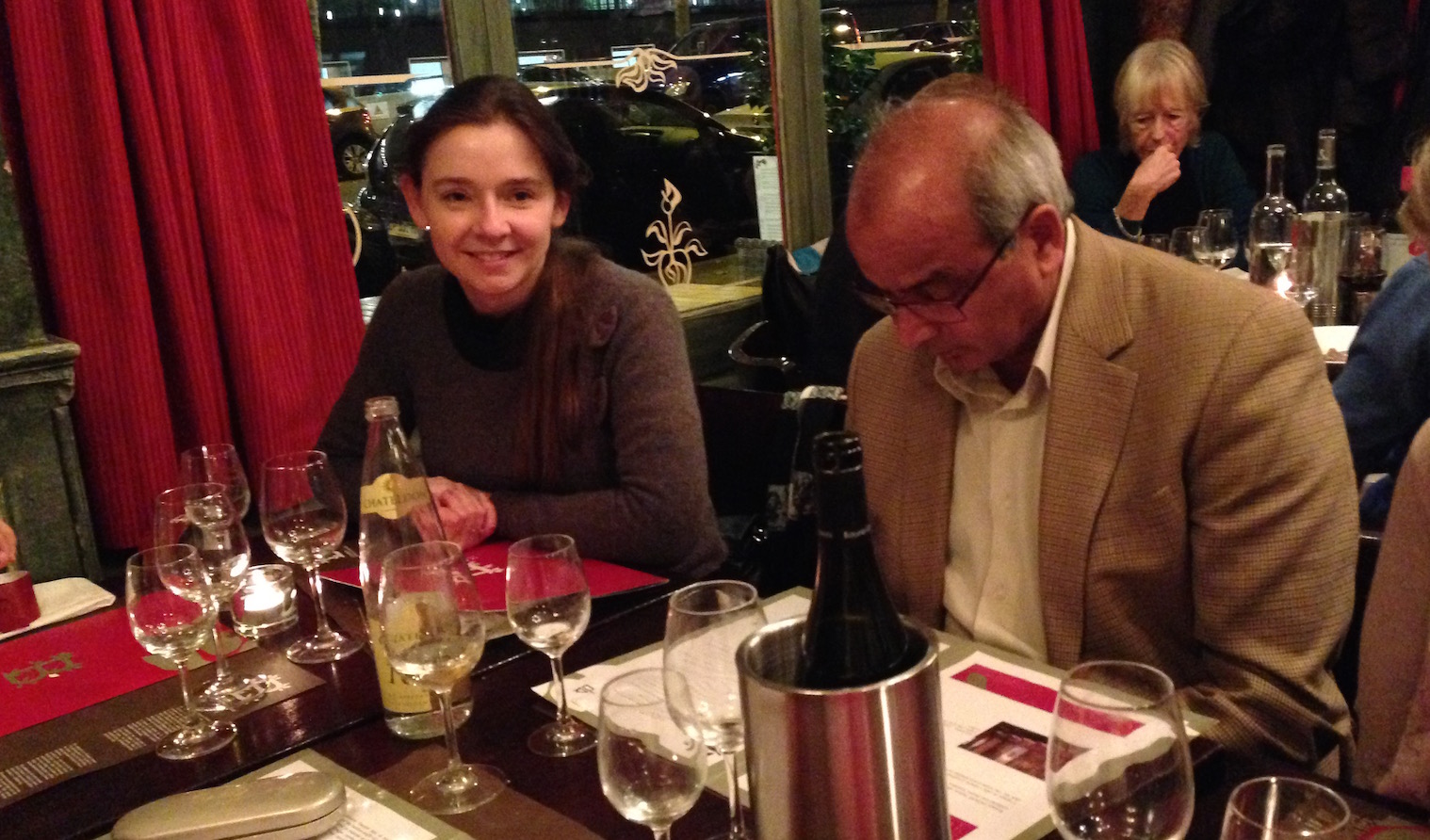
October 18:
I aways attend the annual SEG meeting, but this year I had the added incentive of attending the Awards Ceremony as an honoree. I finally met Peggy
Prior in person. Peggy has
been putting in a huge amount of work arranging my travels around the word. As a Distinguished Lecturer, I now sit on the nominating committee for a few years, so if you know
of anyone who would do a good job of representing SEG and giving an informative and entertaining talk, please let me know!
I hesitate to blow my own trumpet too loudly, but for those of you
who have never seen me wear anything more formal than a Hawaiian shirt, I am posting a photo (courtesy SEG) of me receiving the Distinguished Lecturer award
from John Bradford, SEG President.

October 11:
After Perth, it was back home through Sydney, mercifully uneventful. My next engagement was the University of California Santa Cruz campus, my
first US visit and, remarkably, the first time that I have visited this sister campus in my 33 years at UCSD. It is a lovely campus nestled among
redwood trees, almost like a forest community, although as we found out the parking is not much different from my home campus (that is, challenging).
I was received with enthusiasm, and gave two talks, inversion at lunch time (my apologies for being a little late - see "parking" above) and marine EM in the afternoon seminar slot. My host was Dan Orange,
a UCSC alum who is well known to the audience, and so although Dan was in fact involved in the business side of the early commercialization of the Scripps marine
CSEM system, I felt obliged to point out that it was Dan's father, Arnold, who was the Orange attributed in my slides as a collaborator on the science. I perhaps pushed
this joke a litte too far (sorry Dan!).
My host, Dan Orange (pouring) is very proud of his wine cellar:
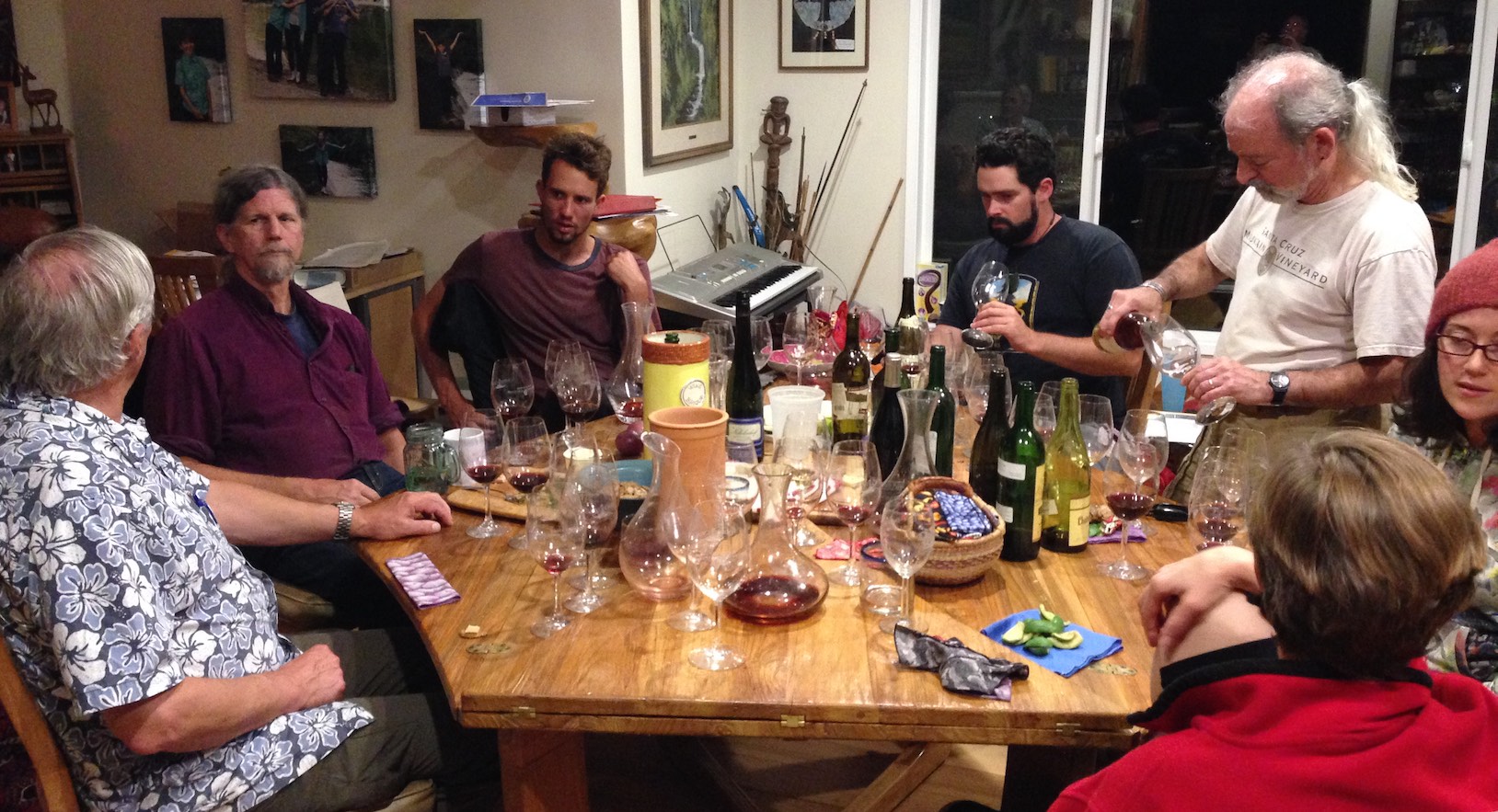
September 30:
Today I talked at the University of Western Australia, where I got my geology bachelor's degree in 1979. Much has changed, but some parts
of campus are still recognizable...
Amongst all the stainless steel and glass, a memory of an earlier age:
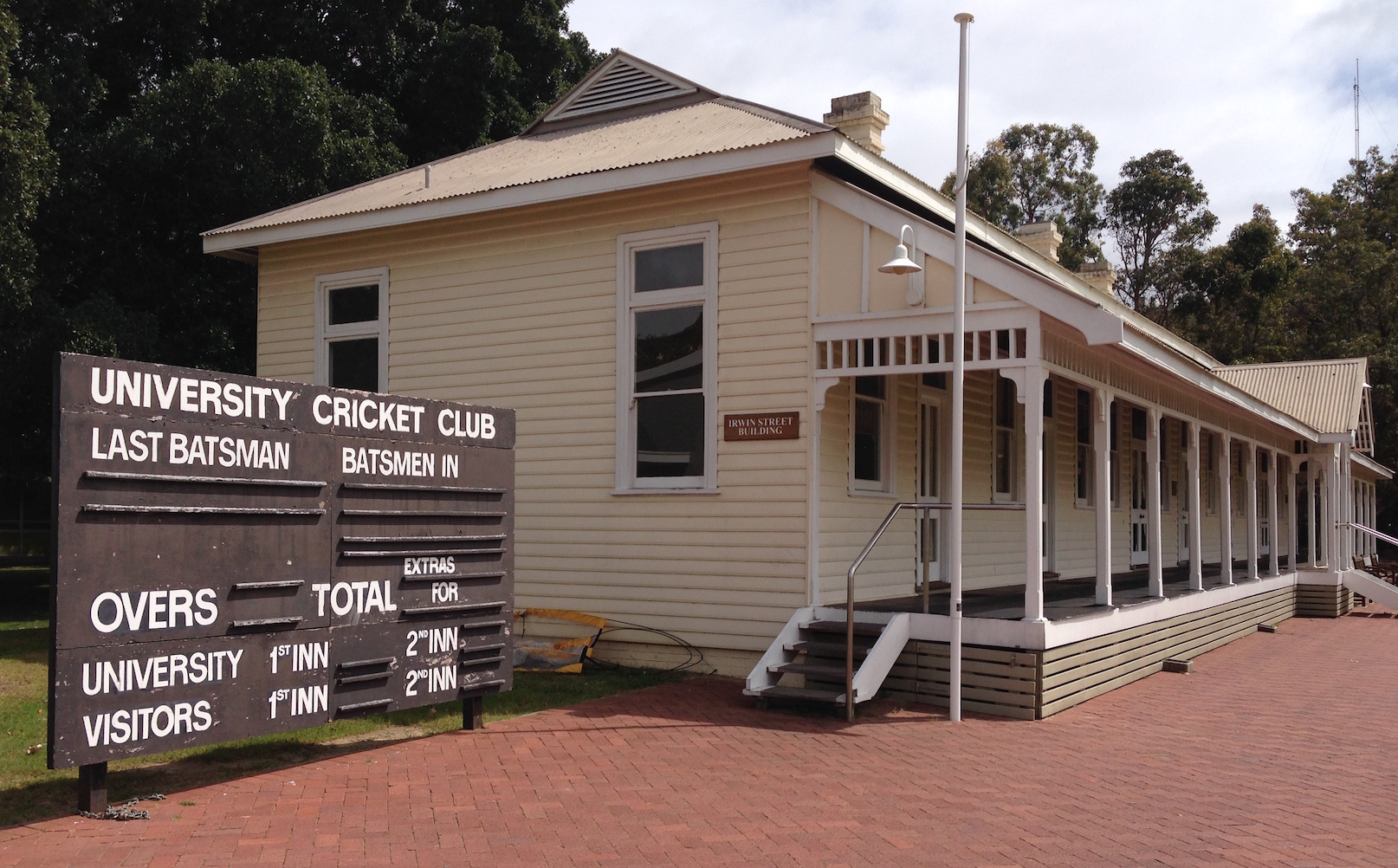
September 29:
When in Perth I like to stay at a place on the south side of the river, near a ferry that will deposit me right in the middle of town in about 10
minutes. The view across the river is lovely, especially at night. Perth was nicknamed "city of lights" in 1962 when John Glenn flew over in one
of the early manned space missions, and everyone turned lights on and pointed flashlights to the sky so Glenn would see the city (he did).
The ASEG meeting this evening had a great turnout (they had to change the venue to accomodate everyone).

September 28:
Today I gave a talk at Adelaide University, which has a lovely campus right on the river in the middle of the city, followed by lunch in a pub.
Severe rain was predicted, and indeed delivered that afternoon, with a "megastorm" rolling in around lunchtime. All the power (I mean ALL the power,
throughout the entire state) went out just as I caught a taxi to the airport for my flight to Perth. See
this news report. I seem to
be attracting bad weather to my travels. I didn't mention it before in my blog, but the day I flew back from Thailand on my Asia DL leg
Tokyo was hit by a hurricane. Amazingly, the airport was only shut down for an hour, and I was only 4 hours late getting home.
Back to Adelaide: The traffic behaved very well in spite of all the traffic
lights being out, but when I got to the airport the emergency power was lighting up only a corner of the lobby. Qantas commandeered a few checkin
counters in this corner and I got a boarding pass, but there was no power for the security machines and the line at security stretched across the entire lobby.
After waiting a couple of hours in line (again, everyone behaved very patiently), power flickered on and I have never seen an airport security line
move so fast. However, it took another couple of hours to get all the planes that had backed up at the gates up into the air.
A bad day at airport security:

September 27:
Flew from Melbourne to Adelaide in time to give a talk at the ASEG that evening. Another beer themed event, this time at the Cooper's Alehouse
(Cooper's being a famous brand of South Australian beer). Another good turnout (must be the beer), and for the second time I was thanked
with a bottle of Australian red wine at the end of my talk (and a few glasses before).
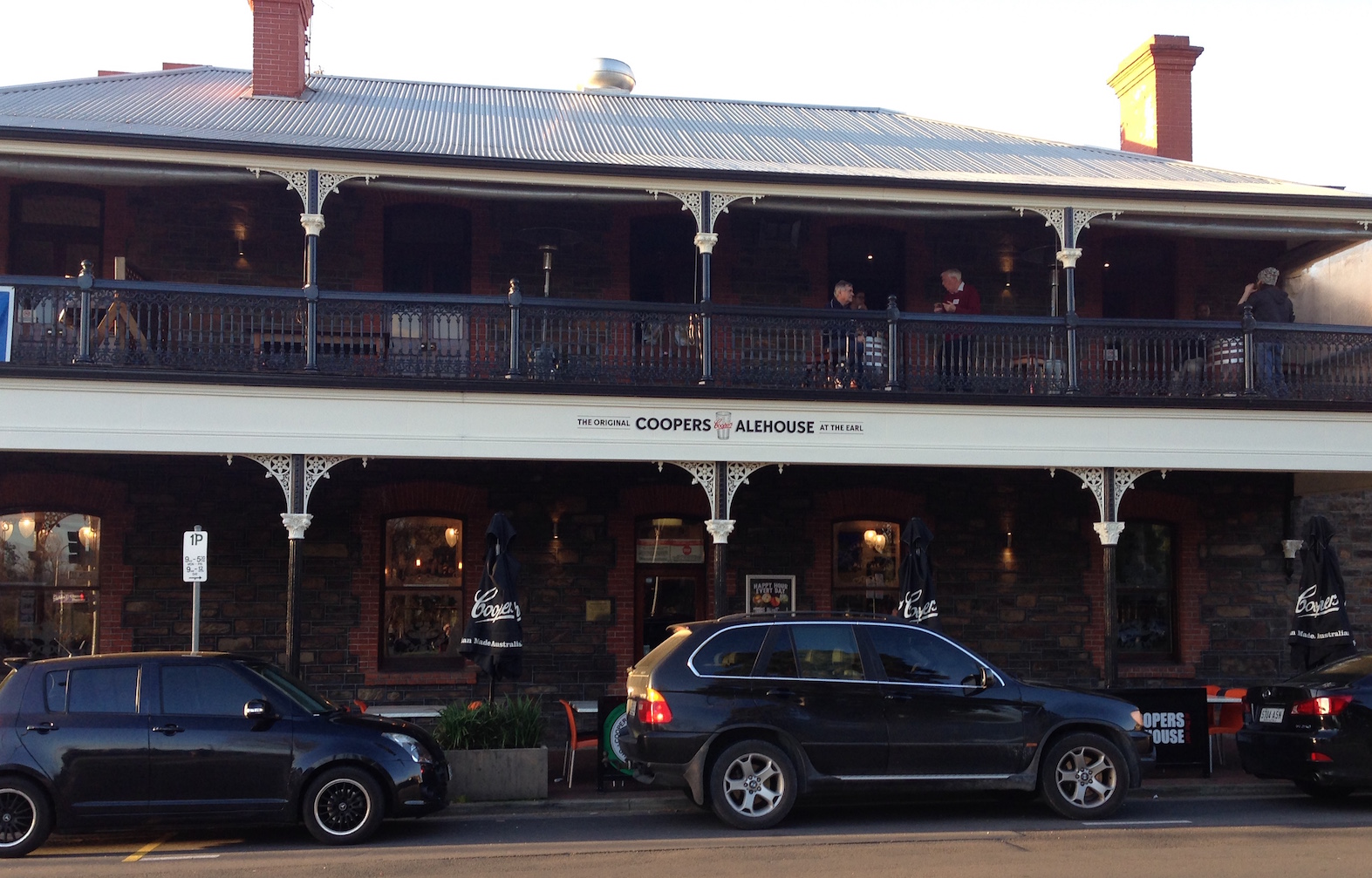
September 26:
After a morning walk Cathy's sister and husband drove me up to the City in time for my evening talk, which was held at the "Kelvin Club".
Melbourne has a number of (old fashioned?) clubs and I became worried that my comfortable travelling attire (running shoes, jeans, fleece jacket)
wouldn't meet the dress code. I have memories of an ASEG meeting being held in the Canberra Club when I was a student at ANU, and I was turned back
at the door because my shoes were inappropriate. Fortunately times seem to have changed and they let me right in and offered me a drink. Again,
the talk went well (inversion this time) and there was good discussion afterwards.
Melbourne city from my hotel. Note the boat sheds on the river. The pink and grey complex in the lower mid-right is the railway
station doubling up as an arts/museum complex.

September 23-25:
Cathy and I spent the weekend taking a break with Cathy's sister and family at their home on the Mornington Peninsula, a rather scenic
mix of agriculture (lots of vineyards) and holiday homes (some very large) south of Melbourne city.
We did lots of bush walks and sampling of the local products, including a couple of bottles of now 9-year old pinot noir that I had stashed under their
stairs last time we were visiting.
There is a nice walk to Bushranger's Bay, which is a fairly reliable place to see kangaroos. At the right time of day they bound downhill en masse across
the track, which is a real sight we didn't get to experience this time, but there were roos in abundance, and nearly all of them had joeys in
their pouches.

September 22:
This morning I flew from Canberra to Brisbane in time for a 5:30 pm meeting of the Brisbane Australian SEG (ASEG). In good Aussie style the meeting
was held in a brewery ("it's handy for getting a beer").

My hydrate talk was requested, which sorta surprised me, but we had a good turnout and everyone seemed to enjoy it a lot.
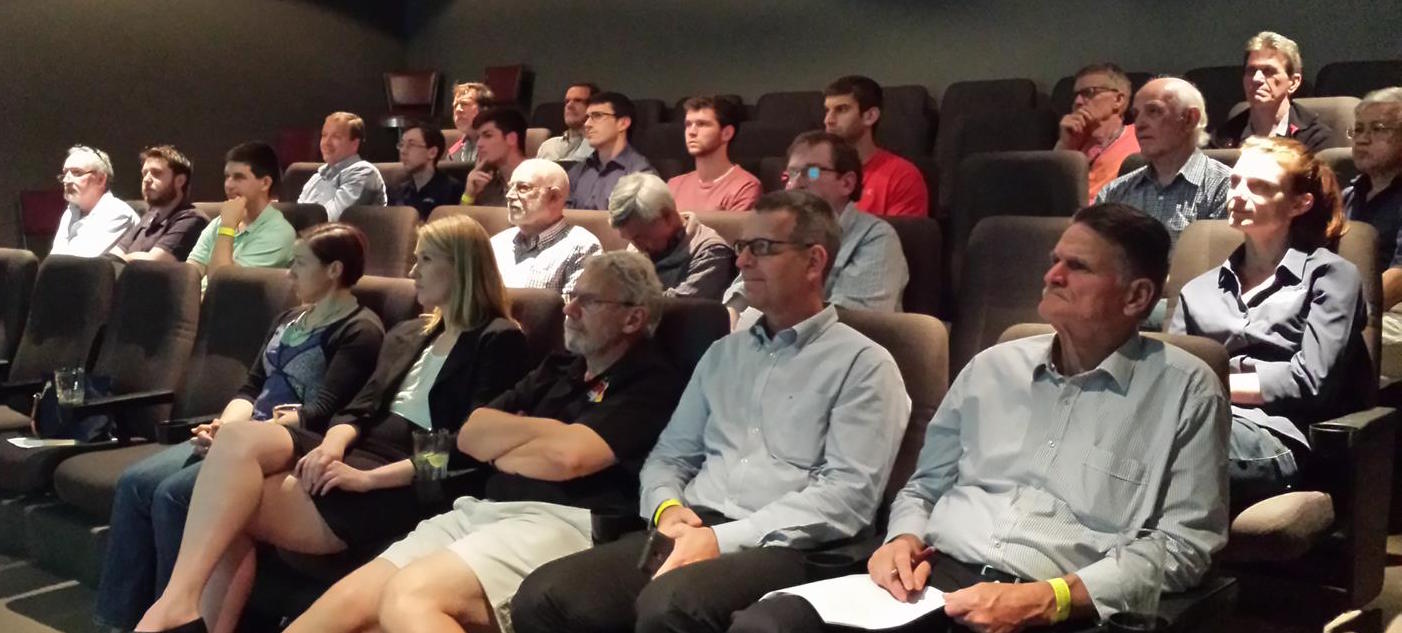
September 20-21:
Cathy and I found our good restaurant - a Chinese themed place. Many people don't realize that the restaurant scene is Australia is one of
the best in the world, with an emphasis on very fresh local food, often seafood. Asian fusion is one of our favorites, and well represented here.
The talk at the University of Sydney went well, and one of the pioneers of the magnetotelluric method, Keeva Vozoff, showed up. A colleague from
Canberra, Ted Lilley, attended because the Sydney and Canberra talks were different. He also had a granddaughter enrolled in Physics,
who we met at lunch. The campus, the oldest in Australia, is very pretty. After lunch Cathy and I rented a car and re-acquainted ourselves with
the Hume Highway, much improved since we lived in Canberra 33 years ago (!). The usual "Wombats, next 5 km" signs were evident, and we did see a
wallaby (small kangaroo) sitting on the side of the highway.
In the morning we visited the Research School of Earth Sciences at the Australian National University, where we did degrees lo those many years ago. Much has changed. In our day there was the Jaeger
building and the Old Hospital Building. Now the research school and the undergraduate department have been merged, and they are up to Jaeger-8 in the
earth science complex. We caught up with Ian Jackson, who had a research position when we were doing degrees, went on to be Director, and recently
retired (partly because as director he encouraged others to retire in order to make room for young people). Ted Lilley took us around the Black
Mountain Paleomagnetic Laboratory, where Cathy did her thesis work. Again, much has changed. The instruments are smaller and more automated,
and the old building has been joined by a new building with the biggest magnetically shielded room I have seen.
The talk, hosted by Geoscience Australia, was well attended, and people seemed genuinely interested in the intricacies of geophysical
inversion. No pictures from Canberra - it rained, often heavily, most of the time we were there.
The main quadrangle of the University of Sydney, founded in 1850 - on the left is Cathy and Dietmar Muller, our host for the visit:

September 19:
Here we are! Australia. With so many friends and relatives here, not to mention my two alma maters (or almae matres for the purists),
I have been looking forward to this leg of the DL tour. And, my wife Cathy has been able to join me (although she has already worked out how to avoid
attending my lectures, having heard it all before). We arrived in Sydney early this morning after a very long night, and have so far
satisfied two parts of my jet lag cure tripartite, with a big coffee at Circular Quay and then a ferry ride to Manly Beach, where we took a long hike
around the peninsula. Saw a good number of animals, including several
eastern water dragons. Soon we will find a good restaurant and take care of the third bit of the cure.
Two icons of Sydney seen from the Manly ferry:

August 14-21:
The timing of the Japan/Vietnam visit was designed to coordinate with the 23rd EM Induction Workshop in Thailand. After Hanoi I flew
to Chiang Mai for the start of the workshop, which is held every two years and is the premier meeting in my field. The conference was a huge success
and I enjoyed meeting up with old friends from all around the world. I even learned a few things. I met a few colleagues I had just seen in Japan,
and a whole bunch who I will be seeing during the next segment of my DL tour in Australia next month. Stay tuned...
300 of my best friends:

August 11-13:
On the 11th I traveled from Kyoto to Hanoi, kindly being met at the airport by my host, Nguyen Nhu Trung. My talk was at 9 am on the 12th,
and was well attended (30-40 people). My topic was gas hydrate, and the discussion was very lively: there is clearly a great interest in this subject
in Vietnam. I had a free day on the 13th. I started by paying my respects to Ho Chi Minh, and then decided to walk around the city area.
However, walking is not the preferred mode of transport in Hanoi (the scooter is). Traffic is horrendous, and sidewalks are not for walking - they are
mainly for parking your scooter, setting up small tables and chairs for a drink, or perhaps doing some welding or repairing a cylinder head.
Crossing the street is hair-raising. Clearly, the accepted way to do it is to walk slowly across and let the traffic weave around you.
That takes a lot of nerve, not helped by the knowledge that traffic accidents are a leading cause of death here, and pedestrians make up about 12%
of them. After a few hours, I gave up and caught a taxi.
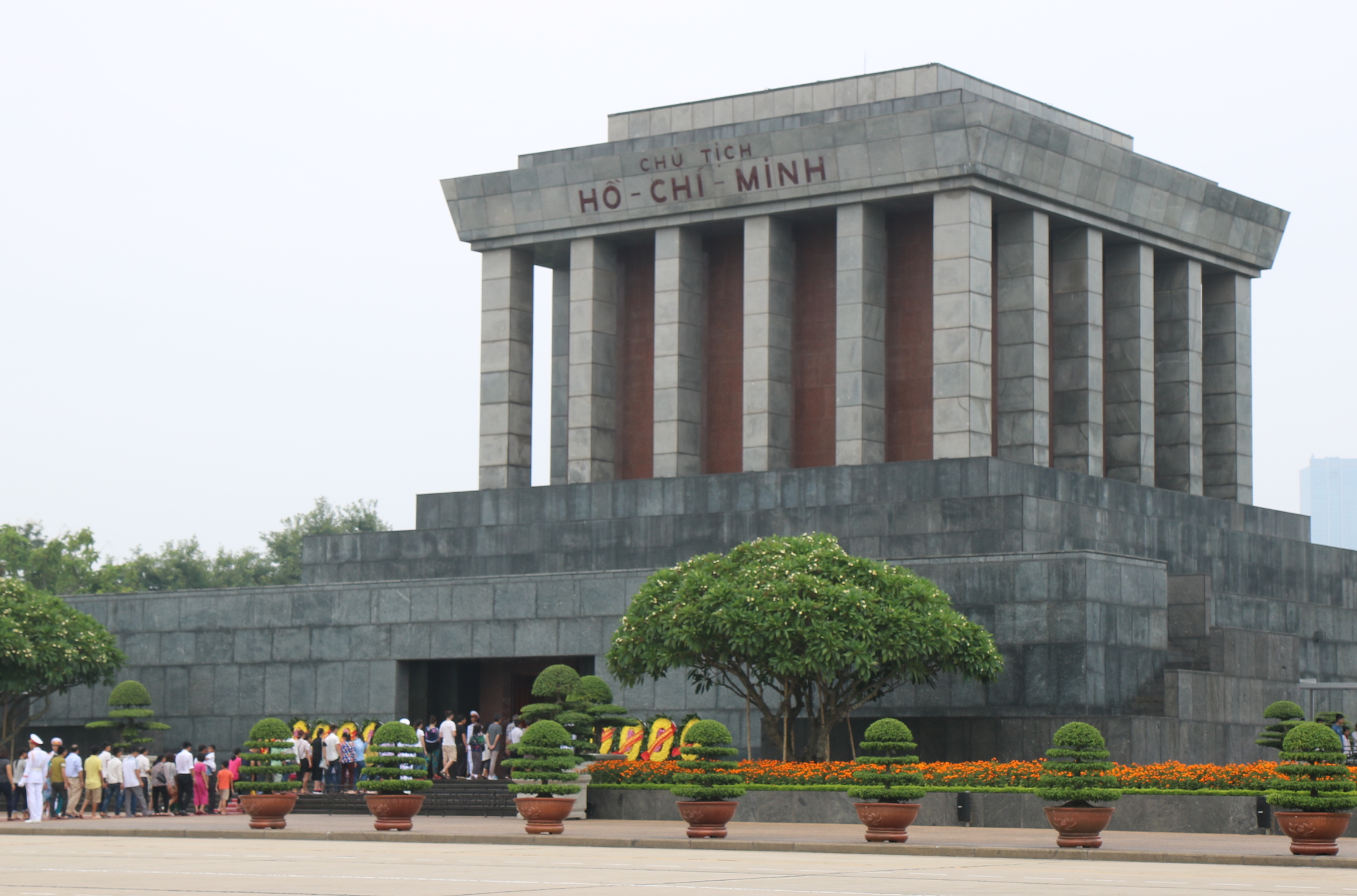
Wednesday August 10:
Started with a visit to Hitoshi Mikada's group at Kyoto University. Hitoshi is my sponsor here and we had a thoroughly pleasant evening
last night dining riverside in Kyoto. After my talk we had a lovely reception near the university, starting with the customary raising
of beer glasses. Kanpai!
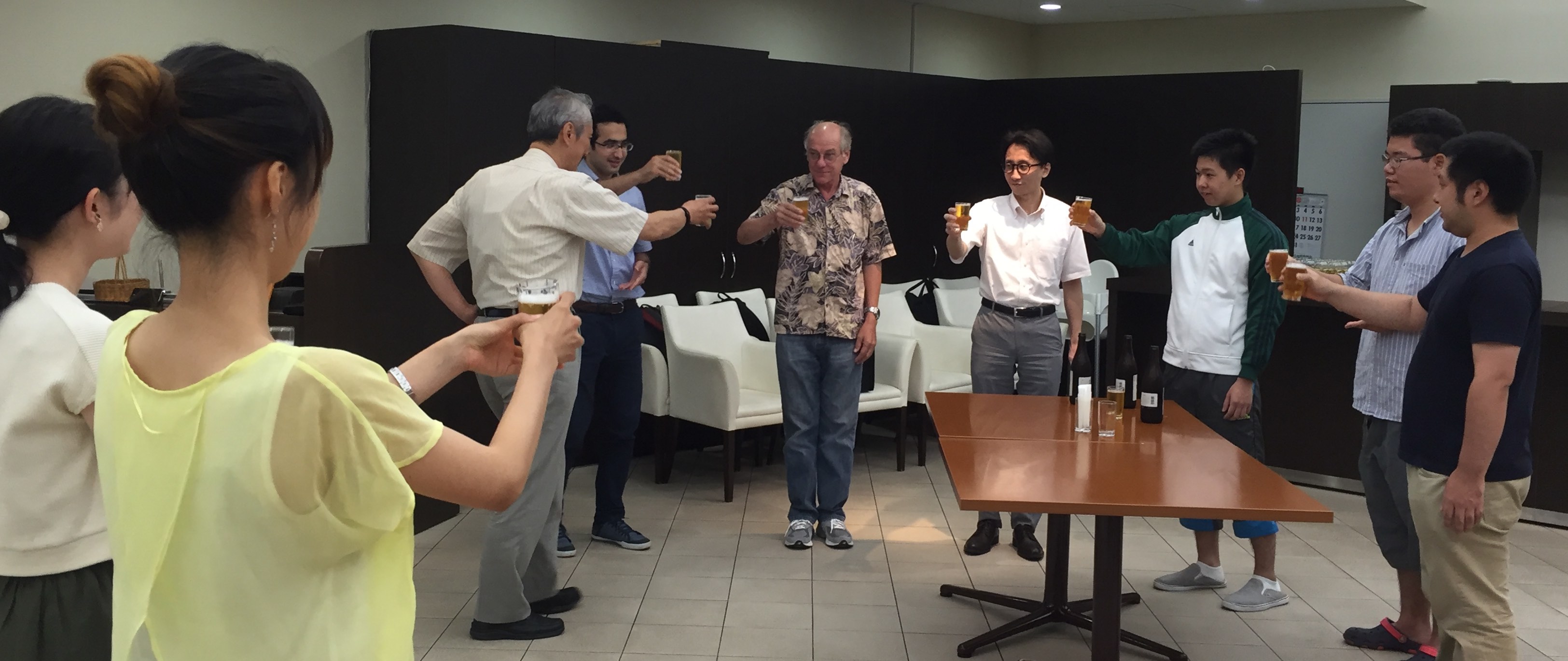
Tuesday August 9:
My day off. The last time I was in Kyoto, two years ago between the SEDI meeting that was held on the Izu Peninsula and the OFG/Fukada gas
hydrate project out of Joetsu, there was a typhoon (Halong) passing nearby. We wanted to walk through the many torii gates at the Fushimi Inari Temple to
the top of the "mountain" (it is only 233 m), but it was closed because of the high winds. I got up early this morning and got
to the temple before the tourist crowds, and managed to do the climb. It was good to get there early - I see that it is now voted the number one
foreign tourist destination by TripAdvisor. It is very popular with Japanese people too.
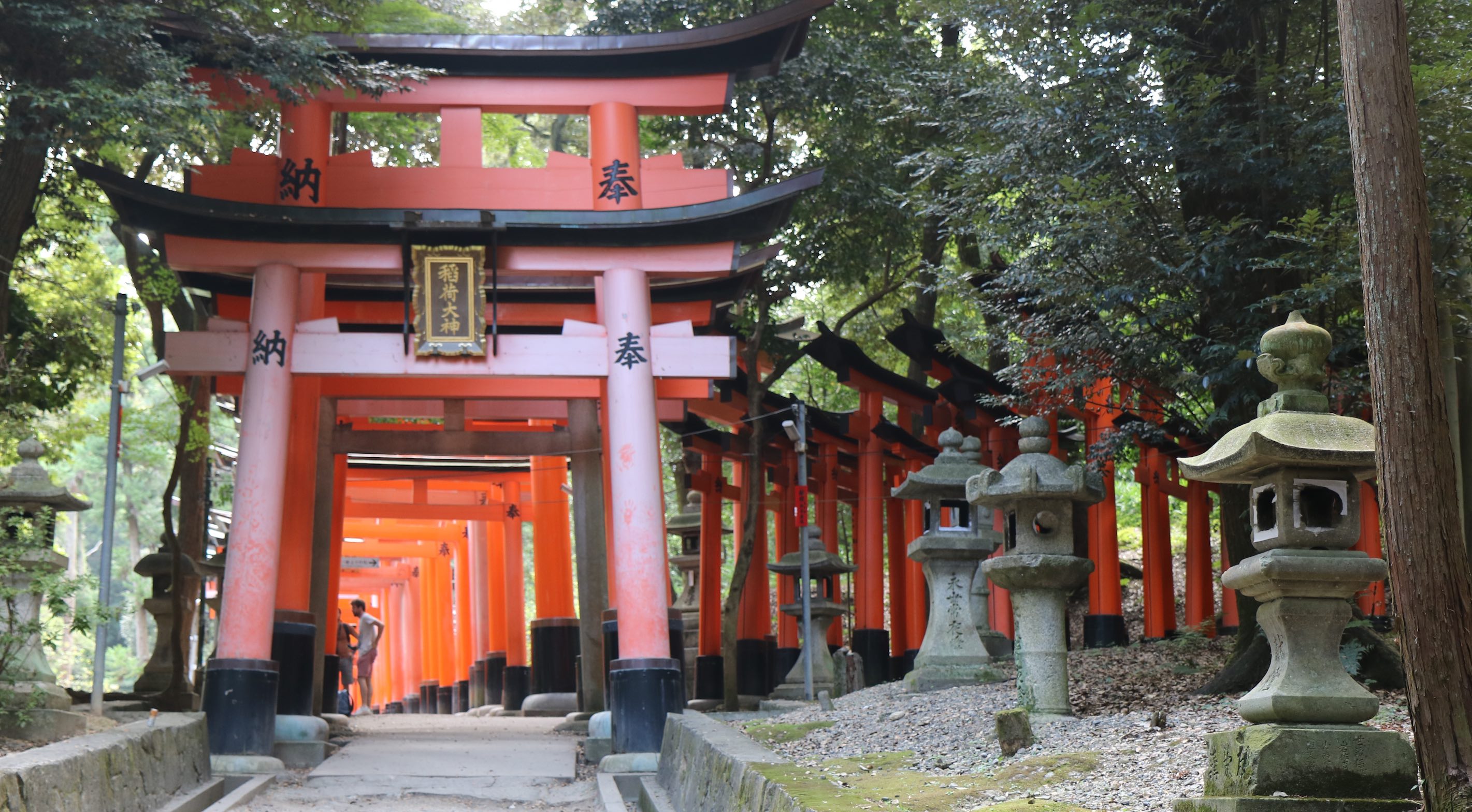
Monday August 8:
Travelled from Akita to Kyoto, which took most of the day, but arrived in time to take advantage of the slightly cooler evening
to walk up to the Nishiki Markets to get some konbu (dried kelp) and genmaicha (green tea with toasted rice). Not that you can't get
these in California, but I bought these from the market a couple of years ago and they are excellent quality. On the way up I stopped
by the Higashi Honganji Temple where I came across a particularly handsome dragon.

Sunday August 7:
This morning I walked around Senshu Park, the site of a 17th century castle, before it got too hot (see torii at the shrine, below). When my host, Shinya
Sakanaka, picked me up to take me to the university it was 36C (97F), most likely the hottest day of the year. The humidity wasn't too bad, but
enough to make it feel pretty hot. My audience was mostly undergraduates, who I fear were a little overwhelmed by my talk, but hopefully I will
inspire them to be careful geophysicists.
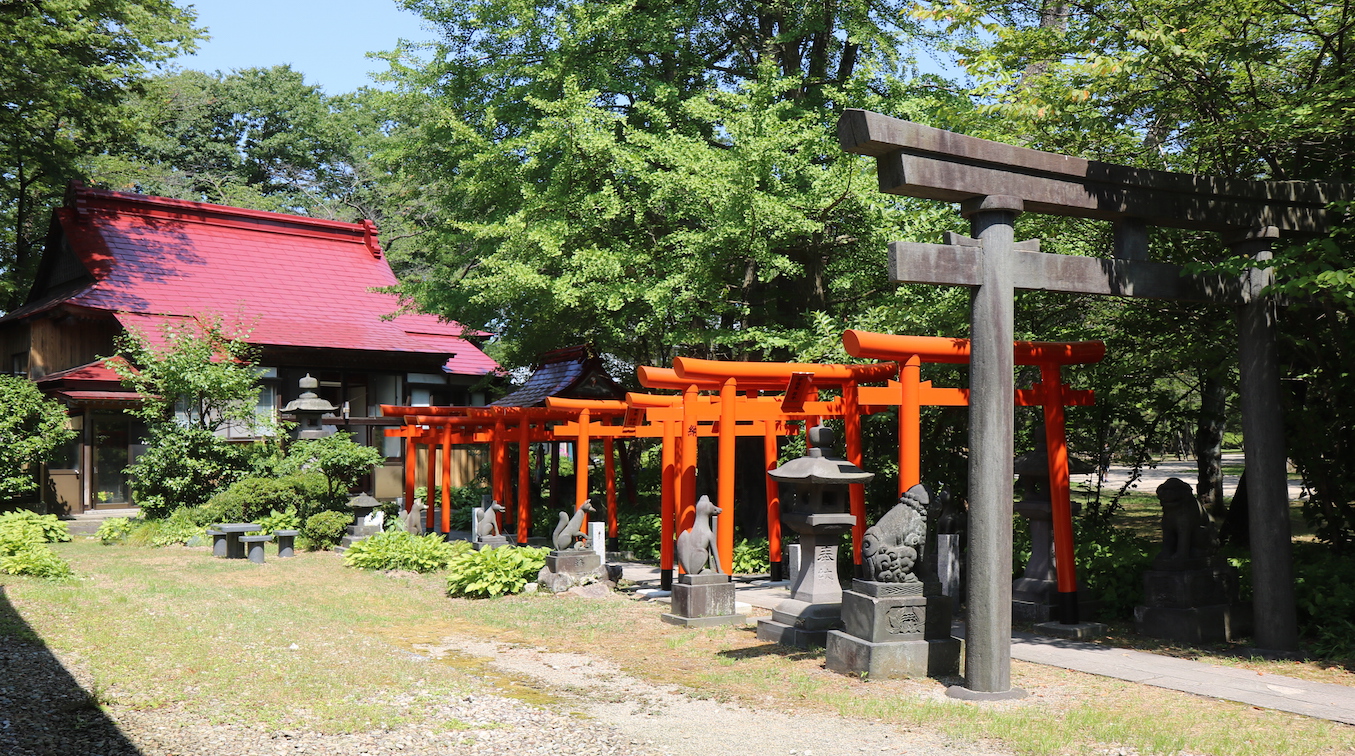
Saturday August 6:
Today I got up early to catch the Shinkansen to Akita, my next stop and where I will talk at the Akita University tomorrow. Koji had given me a
dry run through Tokyo Station so that I could find the right Shinkansen gate, so I had no problem finding my train. It was not a very fast trip
as Shinkansen go, with many stops and winding tracks through the hills, but it was pretty.
The pleasant surprise, that I was only tipped off about yesterday, is that today is the last day of the
Akita Kanto Festival. This festival, designed to drive away evil
spirits so that the harvest will be good, involves balancing 50 kg, 8 m tall, bamboo poles strung with lanterns on one hand, your forehead, or your back.
Of course, I don't mean "your" as in "my". People more skilled at this than I compete during the day to demonstrate these skills, and at night fill a street with what seemed
like hundreds of kanto. The crowd watching was huge, but there were lots of police to keep walkways open and I found a good spot to take some photos.
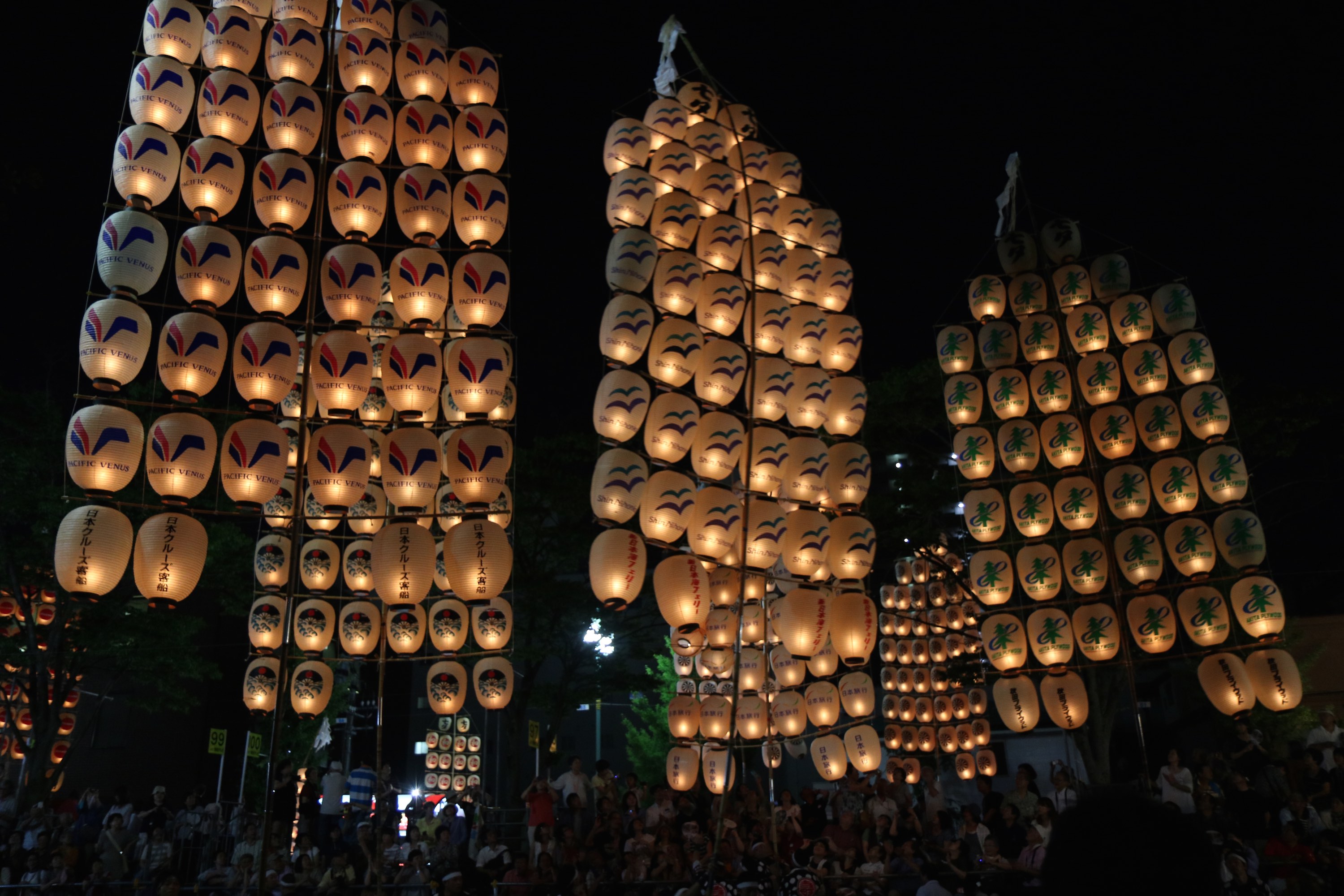
Friday August 5:
My very first DL lecture! It seemed to go allright - as anticipated, the turn-out was a record for the event. I met lots of old
friends from Japan and many people who had met me in the past at various events. And many new contacts. Inpex, which hosted the event,
put on a very nice reception afterwards (more beer, wine, and sake).

Thursday August 4:
Steve's recipe for jet lag: coffee in the morning, sunshine during the day, wine at night. So, started the day with
a walk around the imperial palace gardens (below). Plenty of sun, although the weather is not quite as hot and humid as I
had feared. After lunch visited Waseda University, and then had a lovely dinner with colleagues, including Koji Kashihara, who has
done a wonderful job of helping organize my trip on behalf of SEG-Japan. And yes, we had some wine (and beer, and sake, and whisky...)

Wednesday August 3:
Arrived safely in Tokyo. The SEG is humane enough to fly DL lecturers business class on the long hauls, and on the SAN-NRT route JAL flies the 787 Dreamliner,
which has a higher cabin pressure and humidity. So quite a pleasant trip, even if 10 hours long. Took the Narita express from the airport to Tokyo station, and after negotiating what
must be one of the biggest stations in the word I found my hotel, in time for a meal and night's (sorta) sleep .
Tuesday August 2:
I will be flying to Tokyo tomorrow. JAL has a direct flight from San Diego, which is convenient.
I have been told that over 80 people have signed up for my SEGJ talk on Friday. Stay tuned...
|